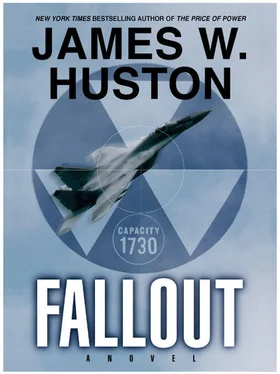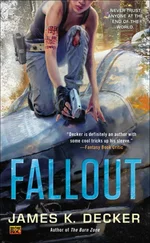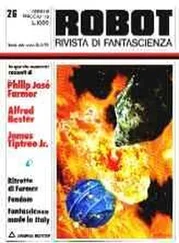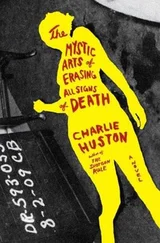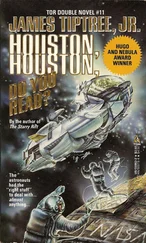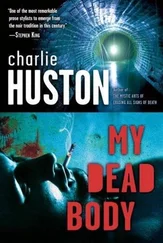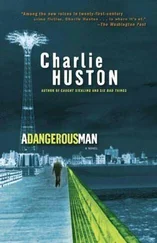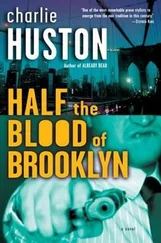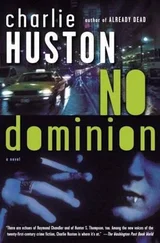“We’ve got to take them out, Catfish. They’re going after a nuclear power plant, and—”
“Sir, I’m showing them approaching the coast.”
“They’re starting a bombing run! Where are they?”
“Directly over San Onofre. That’s restricted airspace—”
“That ought to really matter to them. Get us clearance to fire on them, Catfish!”
“Sir, I work for the FAA. I can’t give anybody—”
Luke’s transmission ran over Catfish’s response: “Nevada Fighters, I’ve got four targets. I’m locking on the target second from the right. Vlad, take the lead to the right.”
“Roger,” Vlad said. He was nearly overcome by the idea of piloting a MiG-29 in California defending an American target trying to shoot down an American F-16 with Gorgov whispering in his memory. He replied to Luke, “It is a difficult shot for the missile.”
“We’re taking whatever shots we can get, Vlad. Get ready to launch.”
Luke could only imagine what would happen if any of the bombs actually hit the rounded domes of the two operating facilities. It would send up a cloud of nuclear fallout that could contaminate all of Southern California. It could contaminate the Pacific Ocean. Depending on which direction the wind was blowing, Los Angeles, San Diego, Orange County, and Palm Springs were all in danger. If it erupted to the same level as Chernobyl, the entire western United States could be endangered by the cloud of radioactive fallout. He pulled his mind back to the fight ahead.
Luke started down as they approached the coast. The F-16s had begun to descend in the darkness toward the coast of California. The horizon behind Luke was just beginning to brighten. Exactly the conditions Khan had wanted. They would be coming out of the east.
Luke looked through the thick, illuminated glass of the HUD, the heads-up display that projected symbols onto the glass in front of him. The missile-launch indicator and the target were moving closer together in the HUD, indicating that his shot was improving with every passing second, but he was still out of range. He knew that Vlad was looking at a virtually identical display.
“I have them on my radar. Request permission to launch!” Vlad insisted. Luke checked his own position and looked at how far ahead of them the F-16s were. It was down to nine miles as they screamed through the black sky at Mach 1.2 in their Russian fighters over Orange County, California. The entire trip from Tonopah to Orange County had taken only twenty-one minutes. The F-15s took ten minutes just to get airborne. He could imagine the F-15s closing on the F-16s supersonic, just as they were, but doubted they’d get there in time, let alone be cleared to do anything decisive. He knew better than most how the military mind worked. They would much rather hesitate and be wrong for inaction than take decisive action and kill people and be wrong. They can always claim they didn’t have enough information to act decisively. They knew they were less likely to be held accountable for doing nothing than for doing something dramatically wrong that would provide pictures of dead, burning bodies.
Luke strained to see the two cement domes of the San Onofre nuclear plant on the coast between Interstate 5 and the Pacific Ocean, dramatically outlined by the morning sun. But there wasn’t any morning sun yet, no light for them to see ahead, only a pink horizon behind them.
The radar showed a good lock on one of the jets in front. It was heading down rapidly. He knew that the F-16 was now getting a MiG-29 radar strobe on its radar warning indicator. He prayed it would deter them from completing their task, but held out little hope.
“Fire!” Luke said to his wingmen, taking full responsibility on his own shoulders for whatever came next. He was hanging so far over the edge in so many different ways that it almost didn’t matter. He expected to die.
Luke pulled the trigger with the jerking motion he taught his students not to use. He felt the large AA-10 Alamo drop off his left wing. He squinted in the darkness as the rocket motor ignited and lit up the sky all around his Fulcrum. A trail of white smoke followed the blazing yellow light toward the California coastline. A missile flew off Vlad’s Fulcrum almost simultaneously.
Luke’s weapon selector had automatically cycled to the next Alamo. He held down the trigger, and his second—and last—Alamo fired. He knew he didn’t have time to break lock to select another airplane. He simply needed to get some ordnance into the area and hope he hit one or more of the F-16s now hurtling down toward the nuclear plant.
Luke watched the altitude readout on his target spin through twenty thousand feet, then eighteen thousand feet, then fifteen thousand feet as the F-16s plunged toward the target in a near-vertical descent. They couldn’t have planned a more effective way to evade the Russian missiles headed at them. Two of the missiles went stupid almost immediately, clearly not guiding. Vlad’s single missile flew straight into the ground. Luke’s second missile seemed to be guiding on the target, its motor still rushing to its destination.
Luke checked his radar just as it broke lock and went back into a track-while-scan mode, a fine radar mode of its own but not one in which the Alamo could be guided to a target. “Shit!” Luke yelled to himself. “Chaff? They’ve got chaff?” Where the hell did they get chaff? Damn it!”
On the beach below, the scavenger with a Dodgers cap knelt with his can sifter and grabbed some sand. He glanced around and put the can down. He looked up into the sky at the F-16s plummeting toward the earth with their engines screaming. He pulled off his backpack, grabbed the heavy black laser designator out of his pack. He looked through a gunsight on top of the device to aim it, then pulled the trigger. The invisible laser illumination immediately flooded over the target in eager anticipation of the laser-guided bombs attached to the F-16s above.
Khan pointed directly at the now laser-illuminated target. The two large domes were well outlined in the predawn light.
Vlad’s second Alamo flew by the trailing F-16 and was detonated by the proximity fuse in the warhead. The warhead ripped the tail off the F-16, which flipped upside down and headed straight for the ground. The pilot stayed with his plane and fought to regain control, at least enough to drive his bomb-laden aircraft directly into the nuclear plant. His F-16 tumbled slowly toward the dark ocean to the west of the power plant.
Luke switched his missile selector to Archer, the infrared missile considered by many to be the best in the world.
Suddenly a new voice came on the radio. “Nevada Fighters, this is Eagle 105, flight of four. State your position.”
It was the F-15s. “Five miles northeast of San Onofre,” Luke said, struggling to talk, fly, and shoot all at once.
“Roger. Confirm you’re flying MiG-29s?”
“Affirmative,” Luke yelled, angry they couldn’t get there before now. “The F-16s are the bad guys.”
“Roger. We’re twenty miles out.”
Luke’s heart sank. He didn’t respond.
“Say location of the bogeys.”
“Directly over San Onofre. They’re dropping. The shooting’s already started. We’ve splashed one and are closing on the others.”
The Nevada Fighter Weapons School instructors all knew they had gotten there too late but had to limit the damage as much as they could. They charged in toward the F-16s to kill them any way they could—or at least disrupt them. They fired any missile they had, at any distance, hoping it would cause one or all of the F-16s to change their flight path enough to miss.
Luke locked up the lead bogey with his radar. He was outside the maximum range of the Archer, but he couldn’t wait. He pulled the trigger, and one of his Archer missiles hissed off the rail toward the lead F-16, which was now pulling up, away from the power plant.
Читать дальше
